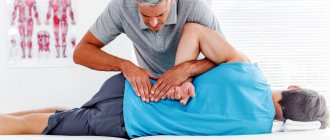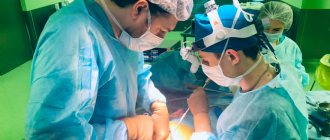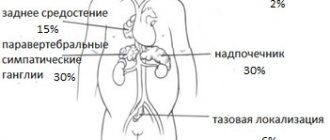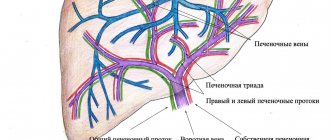Pelvic pain
- this is any pain below the navel or in the perineum. This pain can be caused by various reasons: diseases of the intestines, bladder and urinary tract, kidneys, female or male genital organs. Acute pelvic pain is a signal for urgent medical attention. If there is pain in the rectal area that occurs during defecation or immediately after it, you should consult a proctologist; pain associated with urination is a reason to consult a urologist.
Chronic pelvic pain syndrome
- long-term pelvic pain, ranging in intensity from mild to unbearably strong. Constant excruciating pain contributes to the appearance of depression, severe anxiety and strong feelings.
Chronic pelvic pain in men
and in women they worsen the quality of life because they last a long time (six months or more) and do not allow them to lead a normal lifestyle.
At CELT you can get advice from a specialist algologist.
Make an appointment
Pelvic pain is very common in women. Every 6th patient suffers from them, but no more than 10% go to a gynecologist. At the same time, pain can signal a serious gynecological disease. If pain in the groin occurs when walking, and intensifies when supporting the leg, the patient may have a disease of the hip joint - it is necessary to consult an orthopedic traumatologist.
If you do not know which doctor to contact or have already contacted specialists, but the cause of the pain has not been found, contact a pain treatment specialist.
More about coxarthrosis
Pathologies of the musculoskeletal system
One of the clinical manifestations of diseases of the musculoskeletal system is pain in the pelvic area.
.
| Disease | Clinical manifestations | Diagnostics | Treatment |
| Osteochondrosis of the sacrolumbar region |
|
|
|
| Herniated discs |
|
|
|
| Neoplasms of the pelvic bones, metastases to the spinal column |
|
|
|
| Arthrosis of the sacroiliac joint |
|
|
|
| Tuberculosis ODA |
|
|
|
Bone pain after a fracture
Quite often, ossalgia occurs in people with old fractures. In most cases, this occurs after excessive physical activity. In addition, old fractures can make themselves felt in blood diseases (lymphogranulomatosis, leukemia), in violation of collagen synthesis, autoimmune pathologies, infectious diseases and severe allergic reactions. If your bone hurts when pressed after a fracture, we recommend consulting with a specialist who, after examination and additional examination, will prescribe treatment. For the purpose of prevention, in this case it is appropriate to use vitamin-mineral complexes and calcium supplements.
Pathologies of the urinary system
A number of diseases of the urinary system are characterized by chronic pelvic pain
.
| Disease | Clinical manifestations | Diagnostics | Treatment |
| Nephroptosis | Moderate pain that is aching in nature at the initial stage of the disease. As it progresses, it spreads to the abdominal area and intensifies, becomes permanent, and is accompanied by the appearance of blood in the urine. |
|
|
| Chronic cystitis | A symptom of pelvic pain, which is accompanied by the urge to urinate frequently, accompanied by unpleasant sensations and blood in the urine. |
|
|
| Congenital malposition of the kidneys - dystopia |
|
|
|
| Urolithiasis disease |
|
|
|
Gastrointestinal pathologies
There are many diseases of the gastrointestinal tract that require treatment for pelvic pain
, along with eliminating the root cause that caused them.
| Disease | Clinical manifestations | Diagnostics | Treatment |
| Adhesions due to surgery, inflammatory processes, injuries | Painful pulling sensations in the abdomen, radiating to the pelvis and lower back. |
|
|
| Irritable bowel syndrome |
|
|
|
| Chronic colitis |
|
|
|
Diagnostics
Diagnostic measures are carried out by traumatologists and orthopedists. According to indications, examinations by surgeons, oncologists, and other specialists are prescribed. The examination program may include the following procedures:
- Survey
. The specialist finds out the time and circumstances of the onset of the pain syndrome, its nature, frequency, duration, clarifies the connection with external factors, and the presence of other symptoms. - Physical examination
. The doctor evaluates the appearance of the pelvic area, identifies deformities, pathological mobility, forced body position, and examines the mobility of the spine and hip joints. - X-ray of the pelvis.
Basic examination for bone pathology. Detects fractures, signs of inflammation or osteodystrophy, infectious foci, and neoplasms. - Ultrasound
. Prescribed for diseases of soft tissues, suspected symphysitis during pregnancy. It makes it possible to clarify the localization and nature of the pathological process, confirm the presence of inflammation, space-occupying formations, and other changes. - Other imaging techniques
. If the basic methods are insufficiently informative, at the final stage of the examination, examinations are carried out for a detailed study of bone structures and MRI to assess the condition of soft tissues. - Lab tests
. They are used to confirm the inflammatory process, clarify the type of pathogen, and detect specific markers of rheumatic diseases.
Physiotherapy
Pelvic pain in women
Pelvic pain in women
- a common phenomenon. Between the ages of 18 and 50, it affects 5 to 15% of the fair half of humanity. The percentage increases to 20 when it comes to patients who have suffered inflammatory diseases of the reproductive system.
The causes of pain in the pelvic area can be different, but most often they are associated with changes in the organs of the reproductive system. Chronic pain symptoms are vague and can lead to a variety of other problems, which ultimately have a negative impact on quality of life. The table below shows the main pathologies of the internal organs of the woman’s reproductive system, one of the manifestations of which is pain in the pelvic area.
| Disease | Clinical manifestations | Diagnostics | Treatment |
| Symphysitis (inflammatory processes and injuries in the area of the pubic symphysis received during childbirth) |
|
|
|
| Endometriosis |
|
|
|
| Myomatous nodes |
|
|
|
| Neoplasms of the uterus and cervix of a malignant nature |
|
|
|
Pelvic pain
may occur
during pregnancy
due to natural changes in the pubic and sacroiliac joints. During this period, the pelvis is prepared for childbirth and “stretched.” As a rule, they appear in those expectant mothers who previously had diseases of the musculoskeletal system. If the pain lasts a long time and is intense, you should urgently seek professional medical help.
If the intrauterine device is selected or installed incorrectly, pain in the pelvic area may also occur. They arise as a result of inflammatory processes and are accompanied by rejection of the coil and intense bleeding. Menstruation, accompanied by intense pain in the pelvic area, is a consequence of neurological disorders and a number of diseases of the female reproductive system. They are accompanied by weakness, cramping attacks of pain, a feeling of weakness and can be eliminated by taking analgesics, NSAIDs, and hormonal drugs.
Prevention
It is easier to prevent pelvic diseases than to treat pathological processes and their consequences.
You can protect the female pelvic organs from the inflammatory process by following certain rules:
- Compliance with intimate hygiene standards;
- Elimination of hypothermia;
- Minimization of intrauterine manipulations;
- Use of barrier methods of contraception (condom);
- Regular examination of both the woman by a gynecologist and the sexual partner by a urologist-andrologist.
- When the first symptoms of the disease appear, seek medical help early.
Pelvic pain in men
Pain in the pelvic area in men does not have a clear localization. Most often they are felt in the area near the navel and spread to the lower abdomen, as well as to the perineum, back, and rectum. The causes that cause them are represented by diseases of the reproductive system, which are presented in our table below.
| Disease-cause | Clinical manifestations |
| Chronic bacterial prostatitis | Painful symptoms of moderate intensity, which intensifies at the beginning of urination. As the disease develops and the urethra is involved in the process, the pain becomes constant and the man becomes irritable |
| Tunnel pudentopathy - damage to the pudendal nerve due to pathological changes in the lumbar spine | Feeling of tension and pain in the genitals and pelvic floor muscles, accompanied by urination problems |
| Prostate tuberculosis due to diseases of the urinary tract and testicles | Symptoms depend on the location of the foci of the disease and are expressed in pain in the pelvic area. It is accompanied by a false urge to urinate and its disturbances, purulent discharge in advanced disease |
| Prostate fibrosis | Painful symptoms in the pelvic area are accompanied by a number of sexual disorders and urination disorders |
Treatment of pelvic pain in men
Treatment methods directly depend on the cause that caused them. In any case, it is carried out comprehensively. Thus, for prostate tuberculosis, anti-tuberculosis medications “Salyuzida”, “Metazid” are prescribed, and therapeutic methods are used. If there are indications, they resort to surgery - cavernotomy.
In prostate fibrosis, efforts are directed toward eliminating prostate sclerosis, for which surgical intervention is used to eliminate the affected areas and restore patency of the urinary tract. In addition, treatment of pelvic pain in men
may include physiotherapeutic and local procedures, exercise therapy aimed at stimulating blood flow in the legs. Drinking alcohol, smoking tobacco, and consuming spicy foods is not recommended.
Which doctor should I contact?
A visit to the doctor is simply necessary if the pain does not stop for a long time and is accompanied by fever, numbness of the lower extremities, nausea, or if it occurs as a result of injury. If you want to be sure that you will be correctly diagnosed and treated at a high quality level, contact the CELT clinic. In order to become our patient and get rid of pain, it is not necessary to have a Moscow residence permit. Contact your doctor, and depending on the nature of the pain, the cause of its occurrence and accompanying symptoms, you will be referred to one of our specialists:
- pain management specialist;
- traumatologist-orthopedist;
- rheumatologist;
- neurologist;
- oncologist;
- physiotherapist;
- gynecologist;
- to a urologist.
Definition
Chronic pelvic pain syndrome is a condition characterized by:
- nonspecific pelvic pain of uncertain onset, present for at least 6 months
- absence of changes in organs and tissues that can explain the severity of the pain syndrome
- significant decrease in quality of life [4].
About 15–30% of all medical consultations are carried out for pain symptoms that are not medically explained [2, 3]. Often, thorough studies conducted by doctors of related specialties: gynecologist, urologist, proctologist, neurologist, show the absolute norm.
Why is it so important to see a doctor promptly?
Painful symptoms in the pelvic area can signal a number of diseases of the genitourinary and musculoskeletal systems, as well as the gastrointestinal tract. Taking painkillers will only temporarily eliminate the symptom, but the cause that caused it will not be eliminated - and the disease will continue to develop, which is dangerous for health and life. By consulting a doctor in a timely manner and undergoing a diagnostic test, the patient will find out the cause of the pain and, together with the doctor, will be able to direct efforts to eliminate it, avoiding much more serious consequences, irreversible processes, and sometimes even surgical intervention. Do not delay your visit to the doctor under any circumstances if:
- pain symptoms have an intense paroxysmal nature;
- an admixture of blood is found in the urine or stool;
- internal organs hurt;
- there is headache, nausea, high body temperature;
- Women experience uterine bleeding.
Why do bones hurt during pregnancy?
Ossalgia during pregnancy most often occurs in the later stages. And there are several reasons. Firstly, the bones hurt due to the woman's growing weight. Therefore, it is extremely important to control weight gain and eliminate additional physical activity. Secondly, the cause of ossalgia may be a lack of calcium and vitamin D. In this case, it is recommended to take vitamin and mineral complexes under the supervision of a doctor.
Your doctor will tell you more about why bones hurt during pregnancy in a particular case during your consultation. You can make an appointment on our website Dobrobut.com or by phone. The specialist will answer questions and talk about prevention methods.









